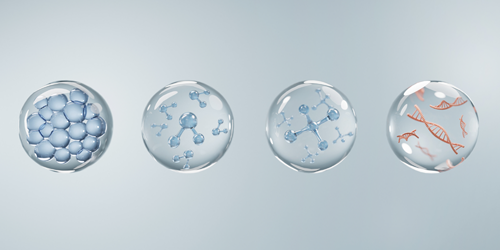A Watery Probe for Ion–Electron Interactions
When it comes to strength, interactions between positively charged ions (cations) and negatively charged 𝜋-electrons top the table. Such interactions abound in biological systems, where they are involved in processes ranging from protein folding to molecular recognition to ion transport, all of which happen in watery environments. Yet scientists have struggled to study cation– 𝜋 interactions in such aqueous systems. Now a team of researchers based in China demonstrates a method that can probe the influence of water molecules on the strength of cation– 𝜋 interactions [1]. The team says that the method could be adapted to quantify the strength of other elusive interactions.
Previous methods for monitoring cation– 𝜋 interactions were developed for gas environments, where the surroundings have little influence on the system. All biological systems contain water in some form, but only semiquantitative methods previously existed for cation– 𝜋-interaction measurements in fluid environments.
To get around this problem the team uses an atomic force microscope (AFM) to study the cation– 𝜋 interaction for a single molecule Previously the researchers showed that an AFM could be used to determine the strength of the repulsive interaction between a single hydrophobic polymer and water. Now they find that it also works for probing cation– 𝜋 interactions. Measuring this interaction for lithium, sodium, potassium, and ammonium cations, the team find that the cation– 𝜋 binding-energy “scoreboard” follows a different order in water than it does in air.
The team attributes this unexpected ordering to differences in the cations’ hydration properties. The researchers say the results could inform the development of materials with stronger binding properties and of drugs with improved efficacies.
–Katherine Wright
Katherine Wright is the Deputy Editor of Physics Magazine.
References
- W. Di et al., “Single-molecule force spectroscopy reveals cation-𝜋 interactions in aqueous media are highly affected by cation dehydration,” Phys. Rev. Lett. 130, 118101 (2023).




